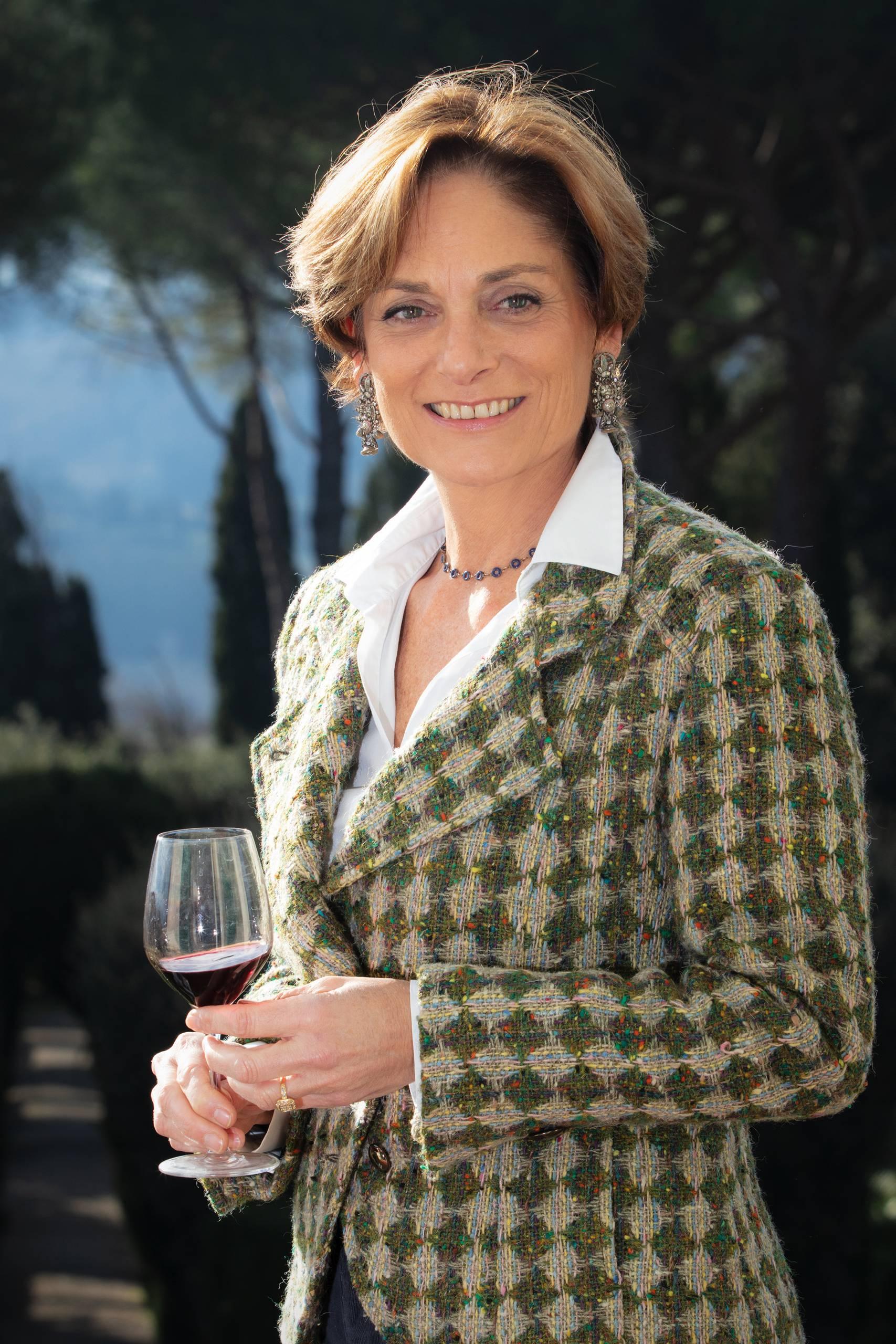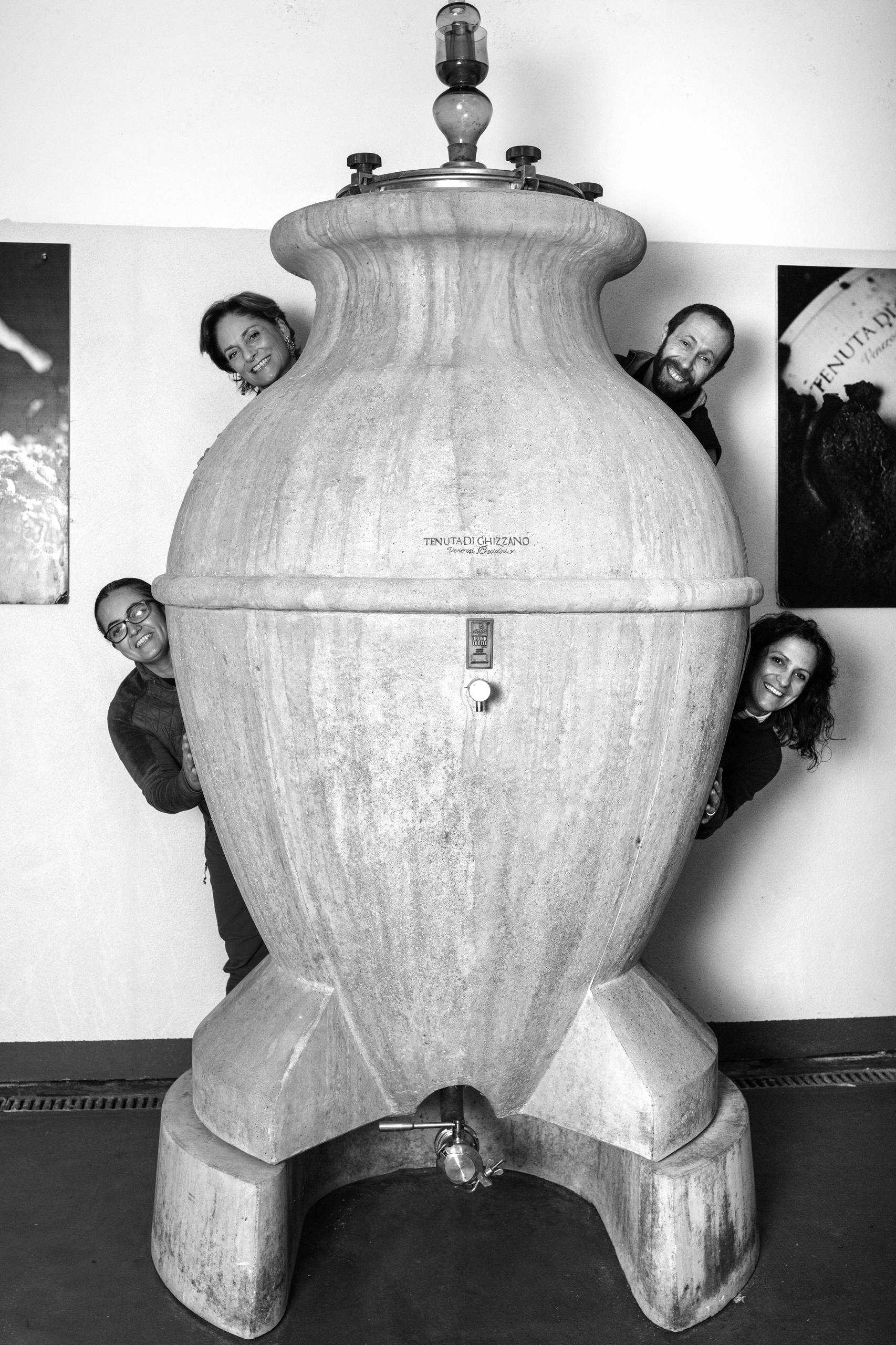TENUTA DI GHIZZANO, Terre di Pisa
History, working naturally with the land, along with research and innovation are at the heart of Tenuta di Ghizzano.
The origins of the Venerosi Pesciolini family date all the way back to the Carolingian period (800-883 AD). It is believed that the family settled in the area in the 14th century with the current winery and olive mill situated next to the tower that was built in 1370 AD by the family’s ancestors. Fast forward to the 1980s and it was current owner Ginevra Venerosi Pesciolini’s father that started the winery as we now know it. As many visionists, he understood the potential for the region long before the area became certified DOC in 2011. In 1985, their flagship VENEROSO was born and was received immediately with praise from Gambero Rosso. Ginevra took over the winery from her father in the late 1990s and in 2003 she set about the journey towards ‘natural’ organic farming.
The ’farm’ is 280 HA in size but is divided into 18 HA for vines, 15 HA for the olive groves, 100 HA for cereal production and 150 HA for forests and woodland. The organic journey started with the elimination of all synthetic and chemical fertilisers, pesticides, herbicides, and fungicides, instead feeding the land with green-manure seeds and other seeds to help fix the nitrogen. In 2006, a move towards biodynamic agriculture was started. In 2008 the whole farm was certified organic and in 2018 the final piece of the puzzle was completed with official biodynamic certification from Demeter for the vines, olive groves and cereal crops.
The vines are pruned in the winter and between the rows up to 30 different types of seeds are sown to assist in bringing back the nitrogen balance required. After the sowing of the seeds, the first biodynamic preparation, #500 is applied, which stimulates the humification process and generates the improvement in the structure of the soil. In late spring and summer herbal teas of horsetail, nettle along with biodynamic preparation #501 are all applied to manage fungal disease. Any use of copper or sulfur is in low concentration levels.
At harvest, grapes are hand-picked into small 20 kg bins. At the winery, after very careful sorting and selection of the best fruit, and destemming, the grapes are transferred to small containers where they are crushed by foot. Fermentation starts spontaneously without the use of selected yeasts and can take anywhere from 7 – 25 days depending on the variety.
After many years of experimentation and research the winery has settled on the best oak barrels and casks for their wine, using a variety of sizes depending on the destination for the final wine. Additionally, in 2017, Cocciopesto Amphora were introduced. As opposed to traditional amphora which have a large oval body and narrow cylindrical neck and are made of terracotta, Cocciopesto are large, uncooked amphoras composed of fragments of ground brick, crushed stone, sand, cement binder and water. They are highly bio-compatible, guarantee micro-oxygenation and bring out the flavours and aromas of the wine during both the fermentation and aging process, enriching and amplifying the fragrance of the wine.
The wines, olive oil and cereal products are pure expressions of this relatively new and, as yet, undiscovered DOC ‘Terre di Pisa’. Ginevra and her family have been at the forefront of the promotion of this region, collaborating with other producers and institutions in the area. ‘Veneroso’ is the historical and most representative wine of the estate made from sangiovese with a small amount of cabernet sauvignon and it has become a reference point for the winegrowing area as a whole.


